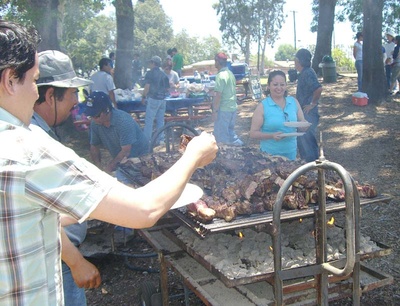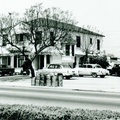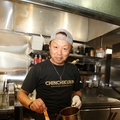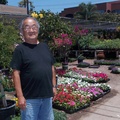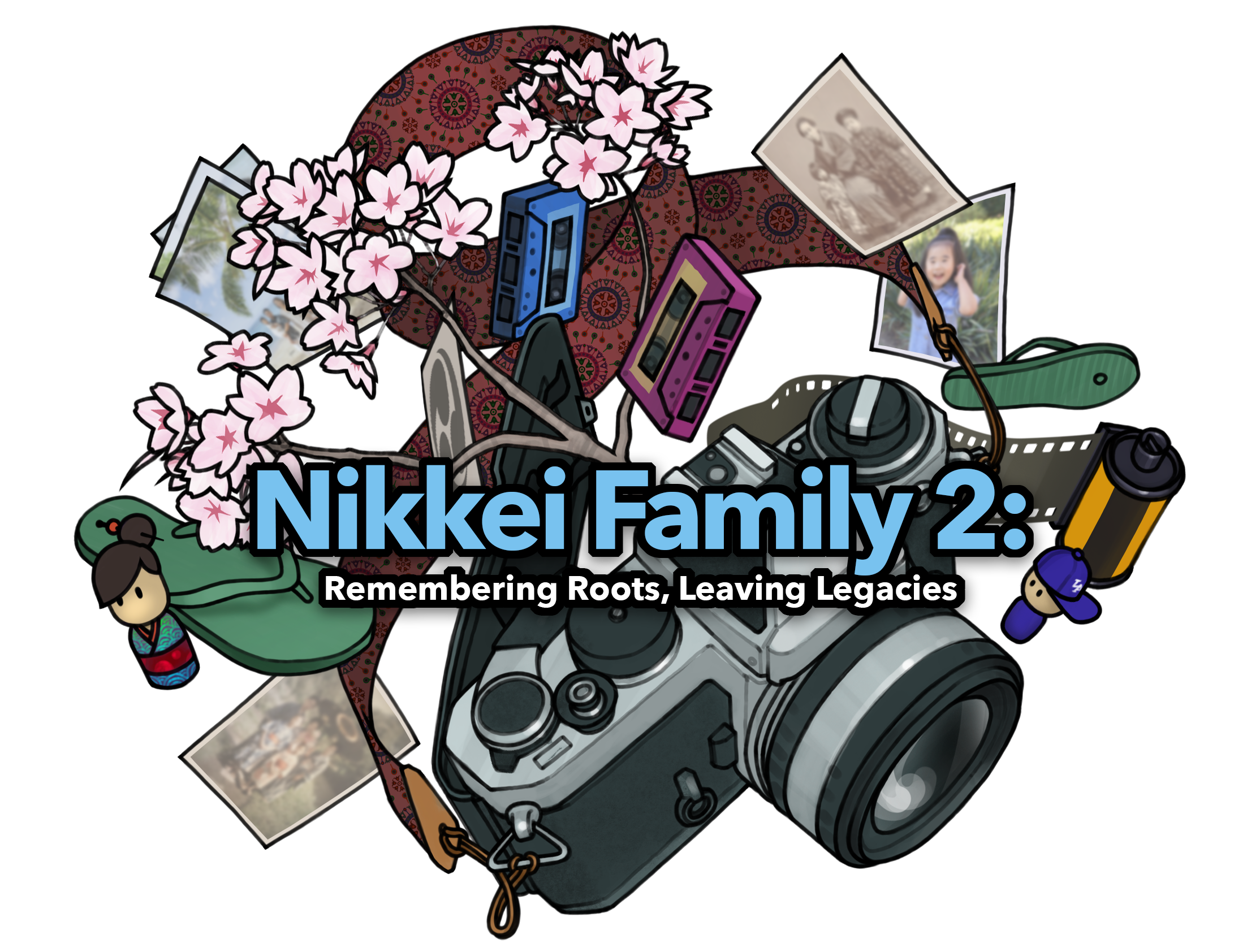In addition to Peru, there is also a group of Japanese people from Argentina active in Southern California. They deepen their friendships and help each other at work by having "asado," the Argentine version of a barbecue, on Mother's Day, Father's Day, or the US's Independence Day, and by participating in national team competitions at the North American Okinawan Association athletic meet. As Argentina is a country known for its "gauchos" (ranch workers) and has a reputation for its meat dishes, "asado" always drew a large crowd.
However, in recent years, the number of people who gather has gradually decreased due to the aging of members and the spread of their residential areas. At that time, some members introduced gateball, which gained popularity and revived the momentum of the group. Or rather, it would be better to say that it started anew as a gateball group, with Japanese Argentines making up the majority of its members. However, even for this gateball group, the number of participants has been decreasing in recent years. Members still work together to hold "Asado," but just like the Japanese Argentine group in Peru, the key to the future seems to be securing members and encouraging new members to join.
80% are from Okinawa or are of Okinawan descent
Recent migration of Japanese Argentines from South America to the United States has primarily been due to the economic situation in their countries of residence. In the case of Argentina, there was another major factor - war. The Falklands War (known as the Malvinas War in Argentina) in 1982 was fought against the UK. It is said that the Argentine military government started the war to divert public discontent from the deadlock in domestic politics, but under these circumstances, many Japanese Argentines left the country between 1980 and 1985, including those who went to Japan to work.
The Japanese population in Argentina is said to be around 35,000. The first Japanese immigrants settled in 1886, and Japanese people began to migrate to Argentina from then on. However, unlike Brazil, where they were based on collective labor contracts, most of the immigrants were relocated or invited from neighboring countries such as Brazil and Bolivia.
During World War II, when Argentina declared war on Japan, the property of Japanese Argentines was frozen and Japanese language schools were closed. However, immigration resumed after the war, and many second and third generation Japanese Argentines began to take up occupations requiring advanced education.
Approximately 80% of the Japanese population is from Okinawa or their descendants, which is why many of the Japanese Argentinians who immigrated to the United States are of Okinawan descent.
From "AJA" to "Deigo"
Many of the Japanese Argentinians who came to Southern California settled in the San Gabriel Valley area. These include West Covina, Glendora, Diamond Bar, Whittier, Walnut, and Hacienda Heights. These people would gather on holidays and festivals to enjoy Argentina's unique "asado" together. From this group, a group called "AJA (American Japanese Argentinians)" was born in 1990. However, it was a loose association with no particular officers, and members would get together when something happened. Nevertheless, there was one person who took the initiative to lead the group as a central figure: Taira Shigeru, who lives in Walnut.
Taira is a second-generation Okinawan born in Burzaco, Buenos Aires Province, Argentina, in 1952. He went to Japan in 1982 during the Falklands War and worked in Hiratsuka, Kanagawa Prefecture, but the following year, in 1983, he met Emilia, who was from Lima, the capital of Peru, in Tokyo and married her. After returning to Argentina for a short time, he came to the United States in 1988. Having worked in landscaping in Argentina, he kept busy in the United States with landscaping and gardening work, but he also took the time to teach the work of other Japanese Argentines who came later.
At that time, the Peruvian Nisei Association (PNA), an organization made up of Japanese Peruvians, was still widely active in Southern California, and because they both spoke Spanish and his wife, Emilia, is from Peru, the PNA and AJA sometimes worked together.
After that, just like the PNA, the number of people participating in activities gradually decreased, but at that time, people who had brought gateball from Argentina introduced gateball at a gathering in Assad. This caught people's interest, and many people started playing gateball. With this momentum, the group joined the Southern California Gateball Association in 1994 under the name "Gaucho". Later, in 1996, the group was voted to change its name to "Deigo", named after the prefectural flower of Okinawa, "Deigo". It is said that at this point, the group began to appoint officers.
3rd place at the World Championships
It was Toyama Katsumasa and Yamashiro Yoshikiyo who introduced gateball to the Assad Incident and other occasions.
Toyama is originally from Okinawa Prefecture. He first went to Bolivia, then Argentina for 20 years. He came to the United States in 1991. After that, he learned about AJA and participated in the sports days of Assad and the Okinawa Prefectural Association, but he wanted everyone to know about gateball, which he had enjoyed since his time in Argentina, so he introduced it to them. Then, they started meeting almost every week to practice. This is a frequency that is not as frequent as AJA, which only meets a few times a year.
After that, in 1996, the Southern California Gateball Association joined forces with the Hawaii Gateball Association to form the USA Gateball Federation, which came under the umbrella of the World Gateball Union (headquartered in Tokyo). This expanded the scope of activities at once, giving Deigo the opportunity to compete in the World Championships, which are held every four years. This led to a rise in the popularity of gateball. In 1998, Deigo placed third in the 7th World Championships held in Hawaii.
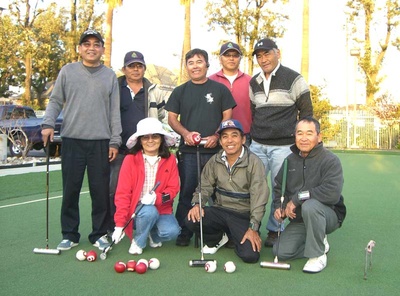
With this momentum, they started holding New Year's parties four or five years ago. The year before last, the announcement of the event was made at the last minute, but still, 40 families gathered at the venue, the East San Gabriel Valley Japanese Community Center in West Covina. Thanks to the efforts of Taira's wife, Emilia, not only Argentinians but also second-generation Peruvians participated.
However, like many other Japanese organizations, Deigo is facing a wave of aging members. When it was first established, nearly 100 people were interested in gateball, but only about 40 of them actually played every week. Today, that number has dwindled to just over 10 people.
In addition to the aging of the population, it seems that the children have also grown up. When the children were small, they used to come to the gateball games with their families and play together, but as they grew older, they became busy with various things, and their families had to help them with school and other things, and couples who used to play together "now only the husband comes out," says Toyama.
Nevertheless, the Deigo members' enthusiasm for gateball seems to be growing stronger, rather than waning, as they say, "This year, we will go to Alaska in July to play a friendly game, and then in September, we will participate in the World Federation Championship in Shanghai." On Sundays, they alternate between practicing in the garden of a retirement home in Boyle Heights and in a park in Glendora. There is no doubt that Deigo will bloom on the international stage again.
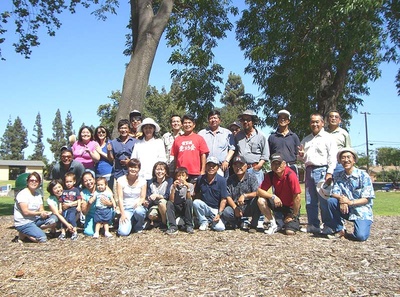
© 2010 Yukikazu Nagashima


